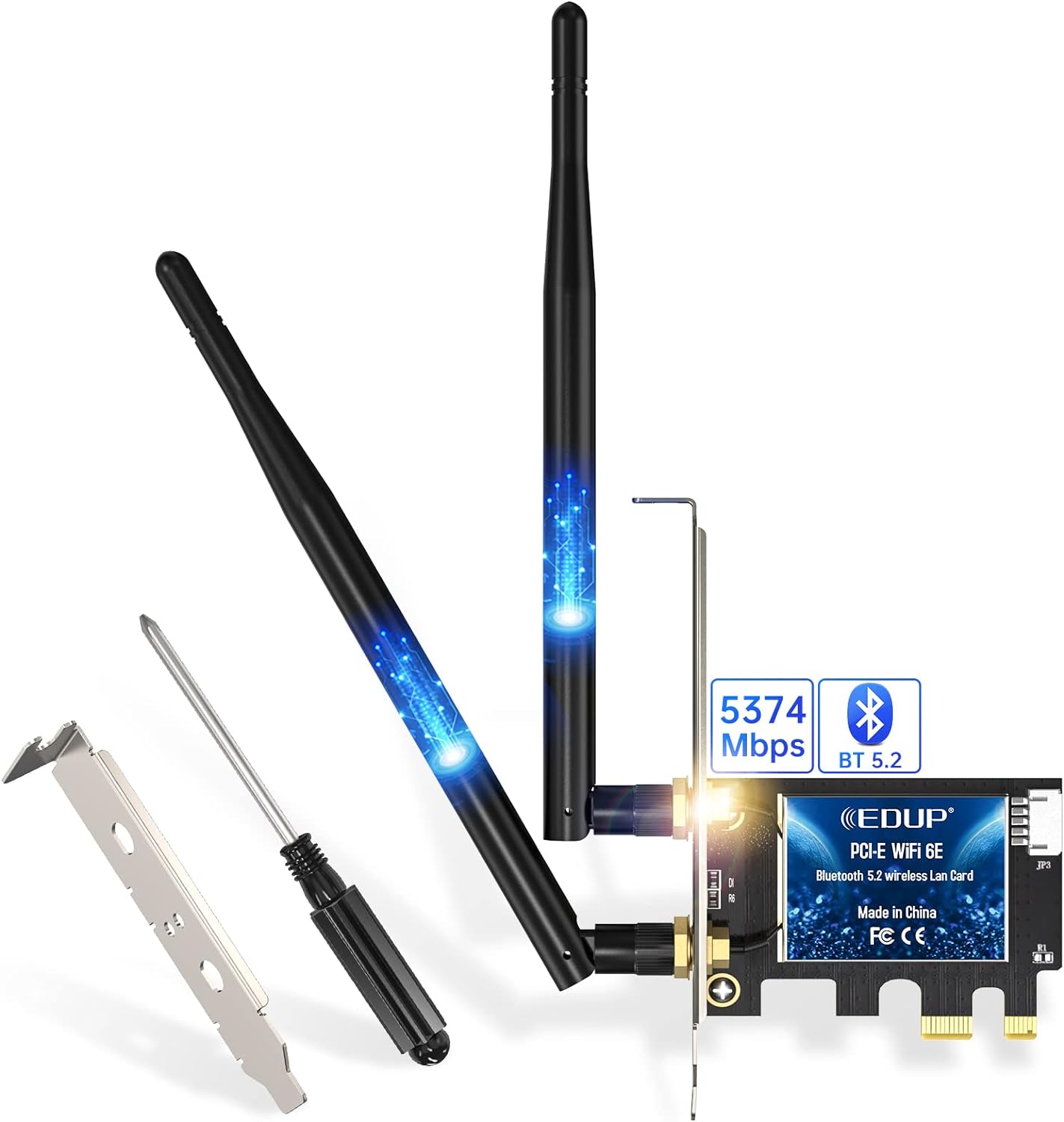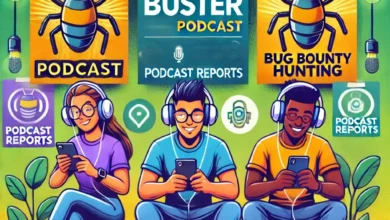Podcasting 101: Getting Started with Your Cybersecurity Show
A Beginner’s Guide to Launching a Successful Podcast

Hey BugBusters! Have you ever considered starting your podcast to share your passion for cybersecurity? Whether you’re an ethical hacking enthusiast, a tech news junkie, or a seasoned pro ready to drop some profound knowledge, launching a podcast is an excellent way to connect with like-minded people and build a community around what you love.
Starting a podcast might seem daunting, but don’t worry—we’ve got your back. In this guide, we’ll walk you through everything you need to know to get your cybersecurity show off the ground. From finding your niche and defining your audience to crafting a killer content strategy and staying motivated, we’ll cover all the essentials to set you up for success.
We’re here to make this journey as fun and smooth as possible. So grab a cup of coffee (or your favorite energy drink), settle in, and start creating a podcast that will educate, entertain, inspire, and engage the cybersecurity community. Ready to dive in? Let’s do this!
Finding Your Niche: What’s Your Cybersecurity Angle?
Selecting a niche for your cybersecurity podcast is like finding your podcast’s unique flavor—it will make you stand out and attract a dedicated audience. Let’s dive into why choosing a niche is important and how to find your unique angle.
Why Selecting a Niche is Important: Your niche is the backbone of your podcast. It defines your content and helps you attract listeners who are passionate about specific cybersecurity aspects. By focusing on a niche, you can become an expert in that area, making your podcast the go-to resource for your listeners.
Popular Niches:
- Ethical Hacking: Dive into the world of ethical hacking, sharing tips, tricks, and stories from the field. Example: Darknet Diaries focuses on real-life hacking stories and the people behind them.
- Cybersecurity News: Keep your listeners updated with the latest news, trends, and developments in cybersecurity. Example: CyberWire Daily delivers concise updates on cybersecurity news.
- In-Depth Technical Analysis: Break down complex cybersecurity topics and technologies, offering detailed explanations and insights. Example: Security Now provides deep dives into security vulnerabilities and tech solutions.
- Interviews with Experts: Feature interviews with leading figures in the cybersecurity industry, discussing their careers, insights, and advice.
Tips for Finding Your Unique Angle:
- Identify Your Passion: What aspect of cybersecurity excites you the most? Your enthusiasm will shine through and attract listeners who share your passion.
- Research the Competition: Look at other podcasts in your desired niche. What are they doing well? Where are there gaps you can fill or unique perspectives you can offer?
- Leverage Your Expertise: Consider your skills and experiences. What unique knowledge can you bring to the table that sets you apart from others?
- Ask Your Community: Engage with fellow cybersecurity enthusiasts in forums, social media groups, and events. What topics are they interested in? What kind of content are they craving?
By finding and honing in on your niche, you’ll create a podcast that stands out and builds a loyal listener base. Your unique angle will attract listeners eager to learn from your expertise and engage with your content. So, take some time to explore what excites you most about cybersecurity, and let that passion guide your podcasting journey!
Defining Your Audience: Who Are You Talking To?
Knowing who you’re talking to is crucial for building a successful podcast. Your target audience shapes your content, tone, and overall approach. Let’s break down how to pinpoint exactly who your listeners are and what they’re looking for.
Determining Demographics and Interests: Start by considering the basic demographics of your potential audience: age, gender, location, and language. Then, delve deeper into their interests, professional backgrounds, and lifestyles. Are they cybersecurity professionals, students, hobbyists, or IT managers?
Strategies for Researching Your Audience:
- Analyze Competitors: Look at similar podcasts in your niche. Check out their reviews, comments, and social media interactions to see who engages with their content.
- Use Analytics: If you already have a few episodes published, use podcast analytics to gain insights into your current listeners. Platforms like Spotify for Podcasters and Apple Podcasts offer demographic data.
- Engage Directly: Create polls and surveys on your social media or website to ask potential listeners about their preferences and needs. This direct feedback can be invaluable.
Understanding Audience Needs and Preferences: Consider their needs and preferences once you understand your audience. What problems can you solve for them? What type of content do they enjoy the most?
Tips for Connecting with Your Audience:
- Create Listener Personas: Develop detailed profiles of your ideal listeners. This can help you visualize and create content tailored to their needs and preferences.
- Stay Relevant: Stay current with cybersecurity trends and events that interest your audience. This will keep your content fresh and engaging.
- Feedback Loop: Always be open to feedback and ready to adapt. Pay attention to what your audience responds to and refine your content accordingly.
By defining your audience, you can create more targeted and engaging content. Knowing who you’re talking to helps you connect with your listeners on a deeper level, driving engagement and loyalty. So, get to know your audience and let their interests guide your podcasting strategy!
Crafting Your Content Strategy: Plan Your Episodes Like a Pro
Creating a podcast is more than just hitting record; it requires a well-thought-out content strategy to keep your episodes engaging and your audience hooked. Let’s break down the steps to plan your episodes like a pro, ensuring consistency and quality every time.
Steps to Develop a Content Strategy:
- Brainstorm Episode Ideas:
- Start by listing all the topics you’re passionate about and think your audience will love. Consider current trends, recurring themes, and potential series.
- Example: For a cybersecurity podcast, you could cover recent data breaches, ethical hacking techniques, cybersecurity best practices, and interviews with industry experts.
- Plan Content Types:
- Vary your content to keep it fresh and engaging. Different episode formats can cater to various listener preferences.
- Interviews: Feature conversations with cybersecurity professionals, ethical hackers, or tech entrepreneurs.
- Tutorials: Provide step-by-step guides on cybersecurity tools, software, and practices.
- News Summaries: Offer weekly or monthly rundowns of cybersecurity news and trends.
- Deep Dives: Detecting complex topics, providing thorough analysis and insights.
- Scheduling Releases:
- Consistency is key. Decide how often you’ll release weekly, bi-weekly, or monthly episodes. Stick to your schedule to build anticipation and retain listeners.
- Create a content calendar to plan your episodes. This helps ensure you have a steady flow of content and can balance different content types effectively.
Importance of Consistency and Quality:
- Consistency: Regular uploads keep your audience engaged and help build a loyal following. It also signals to podcast platforms that your show is active, which can improve visibility.
- Quality: High-quality audio, well-researched topics, and engaging delivery are essential. Invest time in editing and production to ensure each episode is polished and professional.
Tips for Crafting a Winning Content Strategy:
- Set Clear Goals: Define what you want to achieve with your podcast—whether it’s growing your listener base, increasing engagement, or establishing yourself as an expert in your niche.
- Batch Record: Record multiple episodes in one sitting to save time and ensure you always have content ready.
- Stay Flexible: Be prepared to adjust your strategy based on feedback and performance. Use analytics to see which episodes resonate most with your audience and tweak your content accordingly.
You’ll set your podcast up for success by crafting a solid content strategy. Planning your episodes, varying your content, and maintaining a consistent release schedule will keep your audience engaged and help your podcast grow. So, start planning like a pro and watch your cybersecurity podcast thrive!
Setting Goals: Map Out Your Podcasting Milestones
Setting goals is crucial for tracking your progress and staying motivated as you build your podcast. Clear, achievable goals help you measure success and guide your efforts. Let’s explore how to map out your podcasting milestones and use them to keep your show on track.
Tips on Setting Short-Term and Long-Term Goals:
- Short-Term Goals:
- Listener Counts: Aim for a specific number of listeners per episode within the first few months. For example, “I want to reach 100 listeners per episode within three months.”
- Episode Downloads: Set targets for total downloads, such as “Achieve 1,000 downloads within the first quarter.”
- Engagement Metrics: Focus on increasing engagement through likes, shares, and comments. “Get 50 comments on my episodes in the next two months.”
- Long-Term Goals:
- Subscriber Growth: Plan for steady growth in your subscriber base. “Grow my subscribers to 1,000 within the first year.”
- Monetization: Set financial targets if you plan to monetize your podcast. “Earn $500 monthly from sponsorships and ads within six months.”
- Brand Collaboration: Aim to collaborate with well-known brands or experts in your niche. “Secure three brand collaborations in the next year.”
Using Goals to Stay Motivated and Track Progress:
- Break Down Big Goals: Divide long-term goals into smaller, manageable tasks. This makes them less overwhelming and more achievable.
- Example: If your goal is to reach 1,000 subscribers yearly, break it down to 250 subscribers every quarter.
- Regularly Review and Adjust: Periodically review your goals to see if you’re on track. Adjust them based on your progress and any new insights you gain.
- Example: If you surpass your listener count goal, raise the bar. If you’re falling short, analyze why and tweak your strategy.
- Celebrate Milestones: Celebrate when you hit your goals. It keeps you motivated and acknowledges your hard work.
- Example: Share your milestones with your audience and thank them for their support. This will not only celebrate your success but also strengthen your community.
- Stay Flexible: Be ready to adapt your goals based on performance and feedback. The podcasting landscape can change, and flexibility ensures you stay relevant and effective.
- Example: If a particular type of episode gets more traction, adjust your content strategy to include more of that style.
- Use Analytics: Leverage podcast analytics to track your progress. Platforms like Spotify for Podcasters, Apple, and Google Podcasts provide valuable data on listener behavior, engagement, and growth.
- Example: Monitor which episodes perform best and why. Use this data to refine your content strategy.
Setting clear, achievable goals creates a roadmap for your podcast’s success. These goals help you stay focused, motivated, and aligned with your vision. Whether aiming for a specific listener count, increasing engagement, or monetizing your podcast, having defined milestones will guide your journey and measure your achievements. So, map out your goals, stay committed, and watch your cybersecurity podcast reach new heights!
Creating a Publishing Schedule: Consistency is Key
A consistent publishing schedule is crucial for building and retaining an engaged audience. When listeners know when to expect new episodes, they’re more likely to stay subscribed and eagerly anticipate your content. Let’s explore the benefits of consistency and how to create a reliable publishing schedule that keeps your listeners hooked.
Benefits of a Consistent Release Schedule:
Listener Retention: Regular uploads help keep your audience engaged and returning for more. Consistency builds trust and reliability, making your podcast a part of your listeners’ routines.
Growth: Consistency boosts your podcast’s visibility on platforms like Apple Podcasts and Spotify. Regular releases can improve your rankings and make your show more discoverable.
Engagement: A predictable schedule encourages listeners to interact with your content. Knowing when new content is coming makes them more likely to leave comments, share episodes, and participate in discussions.
Practical Tips for Creating a Content Calendar:
Choose a Frequency: Decide how often you’ll release new weekly, bi-weekly, or monthly episodes. Choose a frequency that’s manageable and sustainable for you.
Example: If you’re just starting, consider a bi-weekly schedule to give yourself ample time to create quality content.
Set Specific Days and Times: Pick specific days and times for releasing episodes. This helps establish a routine for both you and your audience.
Example: Release new episodes every Monday at 10 AM.
Plan Ahead: Use a content calendar to plan your episodes. Outline your topics, guests, and any special segments. This ensures you’re never scrambling for content at the last minute.
Example: Use tools like Google Calendar, Trello, or Notion to organize your schedule and set reminders.
Batch Record: Record multiple episodes in one sitting to build a backlog of content. This gives you a buffer in case of unexpected delays or busy periods.
Example: Spend one weekend a month recording four episodes for the upcoming weeks.
Stick to Your Schedule: Consistency is critical. Commit to your publishing schedule and treat it like a professional obligation.
Example: Set deadlines for editing, uploading, and promoting each episode to stay on track.
Sticking to Your Schedule:
Create a Routine: Develop a routine that integrates your podcasting tasks into your weekly schedule. Block out specific times for recording, editing, and promoting.
Stay Organized: Keep all your podcasting materials and plans organized. Use checklists and project management tools to stay on top of your tasks.
Be Realistic: Set a schedule that you can realistically maintain. It’s better to start with a manageable frequency and increase it as you become more comfortable.
Communicate with Your Audience: If you need to change your schedule or take a break, communicate with your listeners. Transparency builds trust and understanding.
Monitor Your Progress: Review your content calendar regularly and adjust as needed. Stay flexible and adapt based on your workflow and feedback.
Establishing a regular publishing schedule will build a reliable presence that keeps your audience engaged and eager for more. Consistency not only helps retain listeners but also supports growth and engagement. So, plan, stick to your schedule, and watch your cybersecurity podcast thrive!
Staying Motivated: Keep the Cybersecurity Content Coming
Keeping your podcast going strong requires a steady stream of motivation and creativity. It’s easy to hit a wall, especially when juggling other responsibilities. Let’s explore strategies to stay inspired, overcome creative blocks, and balance podcast production with your busy life.
Staying Inspired:
- Consume Content: Regularly listen to other podcasts, watch cybersecurity videos, and read industry blogs. This can spark new ideas and keep you up-to-date with trends.
- Example: Listen to popular cybersecurity podcasts like Darknet Diaries or Security Now to see what resonates with their audiences.
- Stay Curious: Keep learning and exploring new topics within cybersecurity. Enroll in online courses, attend webinars, or participate in conferences.
- Example: Platforms like Coursera or Udemy offer courses on various cybersecurity topics that can deepen your knowledge and provide fresh content ideas.
- Set Challenges: Challenge yourself with new formats or topics. Trying something different can reignite your passion and creativity.
- Example: If you usually do interviews, try a solo deep-dive episode on a complex cybersecurity issue.
Overcoming Creative Blocks:
- Take Breaks: Sometimes, stepping away from your work can help clear your mind and bring fresh perspectives. Don’t hesitate to take short breaks to recharge.
- Example: A walk in the park or a short meditation session can help reset your brain and reduce stress.
- Mind Mapping: Use mind mapping to organize your thoughts and visualize your ideas. This technique can help you see connections and generate new concepts.
- Example: Tools like MindMeister or pen and paper can be used to map out episode ideas and themes.
- Collaborate: Partner with other creators for joint projects. Collaboration can bring new ideas and make the creative process more enjoyable.
- Example: Co-host an episode with another podcaster or invite a guest speaker to share their expertise.
Balancing Podcast Production with Other Responsibilities:
- Set a Schedule: Allocate specific times for podcast production in your weekly routine. Treat it like an appointment you can’t miss.
- Example: Dedicate Saturday mornings to recording and editing your podcast episodes.
- Prioritize Tasks: Focus on the most critical tasks first, whether it’s scripting, recording, or editing. Breaking down your workload into manageable steps can reduce stress.
- Example: Create a to-do list for each episode, prioritizing tasks like research, recording, and promotion.
- Delegate: If possible, delegate tasks like editing or social media management to others. This allows you to focus on the creative aspects of your podcast.
- Example: Hire a freelancer to handle the editing, freeing up more time for content creation.
Joining Creator Communities:
- Online Forums and Groups: Join online forums, social media groups, or platforms like Reddit where creators share tips, provide feedback, and support each other.
- For example, join the “Podcasting” subreddit or Facebook groups for podcasters and cybersecurity enthusiasts.
- Networking Events: Attend virtual or in-person events, webinars, and meetups to connect with other creators and industry professionals.
- Example: Participate in cybersecurity conferences or local meetups to network and gain new insights.
- Accountability Partners: Find a fellow creator to act as an accountability partner. Regular check-ins can help you stay on track and motivated.
- Example: Set weekly or monthly meetings with another podcaster to discuss progress, share challenges, and celebrate successes.
Staying motivated is finding what inspires you, managing your time effectively, and seeking support from the creator community. By keeping your creative energy high and overcoming obstacles, you’ll be able to produce content that resonates with your audience consistently. Keep fueling your passion for cybersecurity, and watch your podcast flourish!
Essential Tools and Equipment: Gear Up for Podcasting Success
Having the right tools and equipment is crucial for producing high-quality podcast episodes. Let’s break down the must-have gear to set you up for success and some budget-friendly options for beginners.
Microphones: Capture Clear, Professional Audio
- USB Microphones: Ideal for beginners due to their ease of use and affordability.
- Top Pick: Blue Yeti – Known for its versatility and excellent sound quality, it’s a favorite among podcasters.
- XLR Microphones: For those ready to invest in higher-quality audio, XLR mics offer superior sound but require additional equipment, such as an audio interface.
- Top Pick: Audio-Technica AT2020 – A reliable choice for capturing crisp, professional audio.
Audio Interfaces: Connect and Control Your Sound
- Focusrite Scarlett 2i2: This popular audio interface provides excellent sound quality and is easy to use, making it perfect for beginners and advanced users.
Headphones: Monitor Your Audio Accurately
- Closed-Back Headphones: Essential for accurate audio monitoring during recording and editing.
- Top Pick: Audio-Technica ATH-M50x—Known for their comfort and sound accuracy, these headphones are a great choice for podcasters.
Recording Software: Your Digital Audio Workstation (DAW)
- Beginner-Friendly DAWs: Look for software that’s easy to navigate but still powerful.
- Top Pick: Audacity – It’s free, open-source, and great for beginners.
- Professional DAWs: For those ready to invest in more advanced software.
- Top Pick: Adobe Audition – Known for its robust features and seamless integration with other Adobe products.
Editing Tools: Polish Your Episodes
- Descript: A user-friendly editing tool with transcription and accessible editing features, perfect for beginners and experienced podcasters.
- Hindenburg Journalist: Explicitly designed for podcasters and journalists, this tool makes editing straightforward and efficient.
Pop Filters: Improve Audio Quality
- Aokeo Professional Microphone Pop Filter: Affordable and effective at reducing plosive sounds, enhancing overall audio quality.
Mic Stands and Boom Arms: Position Your Microphone Perfectly
- Rode PSA1 Swivel Mount Studio Microphone Boom Arm: Provides flexible positioning and sturdy support for your microphone.
Acoustic Treatment: Minimize Echo and Background Noise
- Acoustic Foam Panels: Easy to install and affordable, they make a noticeable difference in sound quality by reducing echo and noise.
Portable Recorders: Take Your Podcast on the Go
- Zoom H5: A versatile portable recorder with high-quality audio recording for on-the-go interviews and episodes.
Budget-Friendly Recommendations for Beginners:
- Microphone: Fifine USB Microphone – Great quality at a fraction of the price.
- Recording Software: GarageBand (Mac) – Free and user-friendly.
- Headphones: Sony MDR-7506 – Affordable and highly rated for their sound quality.
- Pop Filter: Aokeo Professional Microphone Pop Filter – Budget-friendly and effective.
Equipping yourself with the right tools doesn’t have to break the bank. Start with the basics, and upgrade as your podcast grows. With the right gear, you’ll be able to produce high-quality content that resonates with your audience and helps your cybersecurity podcast thrive. So, gear up and get ready to create amazing episodes!
Engaging with Your Audience: Build a Loyal Listener Base
Engaging with your audience is key to building a loyal and active listener base for your cybersecurity podcast. Interaction creates a sense of community, keeps your listeners invested, and provides valuable feedback. Let’s explore strategies for interacting with your audience and building a dedicated community.
Strategies for Interacting with Listeners:
- Social Media:
- Stay Active: Regularly post updates, episode highlights, and behind-the-scenes content on platforms like Twitter, LinkedIn, and Instagram.
- Engage in Conversations: Respond to comments, participate in discussions, and use hashtags to join broader conversations in the cybersecurity community.
- Polls and Questions: Use features like Instagram Stories, Twitter polls, and Facebook posts to ask your audience questions and gather feedback.
- Email Newsletters:
- Regular Updates: Send out weekly or bi-weekly newsletters with updates on upcoming episodes, recaps, and exclusive content.
- Personal Touch: Write in a friendly, conversational tone and share personal anecdotes or insights to create a stronger connection with your listeners.
- Call to Action: Encourage your audience to reply with their thoughts, questions, or topic suggestions.
- Live Q&A Sessions:
- Scheduled Live Sessions: Host regular live Q&A sessions on platforms like YouTube, Instagram Live, or Facebook Live where listeners can ask questions in real-time.
- Interactive Discussions: Encourage listeners to submit questions beforehand and answer them live, fostering a sense of participation and community.
- Special Guests: Invite guests to your live sessions to add value and variety to the discussion.
Tips for Building a Loyal Community:
- Create Value:
- Provide High-Quality Content: Ensure your episodes are informative, engaging, and valuable to your listeners.
- Exclusive Content: Offer exclusive content or early access to your most loyal listeners through platforms like Patreon.
- Encourage Feedback and Participation:
- Listener Surveys: Create surveys to gather feedback on what your audience likes and wants to see more of.
- Shoutouts: Give shoutouts to listeners who engage with your content or provide valuable feedback. It shows appreciation and encourages more interaction.
- Build a Sense of Community:
- Online Forums and Groups: Create a space where your listeners can interact with each other, such as a Facebook group, Discord server, or subreddit.
- Collaborate with Your Audience: Invite listeners to contribute to your podcast, whether through guest appearances, topic suggestions, or sharing their stories.
- Be Consistent and Transparent:
- Consistency: Stick to your publishing schedule and be consistent in your interactions with your audience.
- Transparency: Be open about your podcasting journey, challenges, and successes. Authenticity builds trust and loyalty.
Engaging with your audience is more than just responding to comments; it’s about creating a genuine connection and making your listeners feel like they’re part of your journey. By actively interacting through social media, newsletters, and live sessions, and fostering a sense of community, you’ll build a loyal listener base that supports your podcast and helps it grow. So, start engaging and watch your cybersecurity podcast community flourish!
Analyzing Your Performance: Learn and Adapt
Understanding how your podcast episodes perform is crucial for growth and improvement. By leveraging podcast analytics, you can gain valuable insights into listener behavior, identify successful content, and make data-driven decisions to enhance your show. Let’s explore the key metrics and strategies for analyzing your podcast performance.
Using Podcast Analytics:
- Key Metrics to Track:
- Total Downloads: Measures the number of times your episodes have been downloaded or streamed. It’s a primary indicator of your podcast’s reach.
- Listener Demographics: This provides information on your audience’s age, gender, location, and device usage. It helps you tailor your content to their preferences.
- Episode Performance: Tracks how individual episodes perform, including download numbers, listener retention, and engagement.
- Retention Rates: Shows how long listeners stay engaged with each episode. High retention rates indicate compelling content.
- Engagement Metrics: Includes likes, comments, shares, and social media interactions. High engagement means your content resonates with your audience.
- Traffic Sources: Reveals how listeners find your podcast, whether through search, social media, referrals, or direct visits.
- Analyzing Listener Behavior:
- Identify Patterns: Look for trends in listener behavior. Which episodes have the highest downloads? Are specific topics or formats more popular?
- Understand Drop-Off Points: Analyze where listeners tend to drop off during episodes. This can highlight areas where you might need to tighten your content or improve engagement.
- Monitor Engagement: Pay attention to which episodes generate the most comments, shares, and discussions. High engagement often indicates a strong connection with your audience.
- Making Data-Driven Decisions:
- Content Strategy: Use insights from your analytics to refine your content strategy. Focus on creating more of what works and experimenting with new ideas based on listener preferences.
- Release Schedule: Analyze when your listeners are most active to optimize your release schedule. Consistently publishing at peak times can increase visibility and engagement.
- Audience Feedback: Incorporate feedback from your audience to improve your content. Listener suggestions and comments can provide valuable insights into what they want to hear more about.
Tips for Effective Analysis:
- Regular Reviews: Review your analytics regularly. Weekly or monthly reviews can help you stay on top of trends and make timely adjustments.
- Example: Set a specific day each week or month to review your analytics and plan adjustments.
- Set Benchmarks: Establish benchmarks for key metrics and track your progress over time. This helps you measure growth and identify long-term trends.
- Example: Compare your current month’s downloads to the previous month or quarter.
- Experiment and Iterate: Don’t be afraid to experiment with different content types, styles, and formats. Use your analytics to see what works and iterate accordingly.
- Example: If a particular type of episode receives high engagement, plan more content in that style.
- Leverage Tools: Utilize analytics tools provided by podcast hosting platforms and third-party services. These tools offer detailed insights and can simplify the analysis process.
- Example: Platforms like Libsyn, Podbean, and Anchor offer built-in analytics, while tools like Chartable and Podtrac provide additional insights.
By using podcast analytics to track and analyze your performance, you can better understand what drives your show’s success. This data-driven approach will help you create engaging content, optimize strategies, and continually improve your cybersecurity podcast. So, dive into your analytics, learn from your data, and adapt to keep your podcast growing and thriving!
Monetization Strategies: Turn Your Podcast into a Profitable Venture
Transforming your passion project into a profitable venture can be incredibly rewarding. You can employ several monetization strategies to start earning from your podcast and grow your income over time. Let’s explore different methods and offer tips on getting started.
Monetization Methods:
- Sponsorships:
- Brand Partnerships: Partner with brands that align with your podcast’s niche. Sponsored content can include product mentions, ads, or dedicated episodes.
- Example: Reach out to cybersecurity companies, software developers, or tech brands that would benefit from exposure to your audience.
- How to Start: Create a media kit detailing your audience demographics, engagement metrics, and listener statistics. Approach potential sponsors with a clear proposal outlining the benefits of partnering with your podcast.
- Brand Partnerships: Partner with brands that align with your podcast’s niche. Sponsored content can include product mentions, ads, or dedicated episodes.
- Ad Revenue:
- Ad Networks: Join podcast ad networks like Podcorn, Midroll, or AdvertiseCast that connect podcasters with advertisers.
- Example: These platforms allow you to integrate ads into your episodes, either through pre-recorded spots or host-read ads.
- How to Start: Sign up with an ad network, follow their guidelines, and start placing ads in your episodes. Ensure the ads are relevant to your audience to maintain engagement.
- Ad Networks: Join podcast ad networks like Podcorn, Midroll, or AdvertiseCast that connect podcasters with advertisers.
- Merchandise:
- Create and Sell Merch: Design and sell branded merchandise like T-shirts, hoodies, mugs, or posters. Set up your store on platforms like Teespring, Merch by Amazon, or Shopify.
- Example: Offer exclusive designs or limited-edition items to create urgency and increase sales.
- How to Start: Create merchandise using online design tools, set up your store on a platform like Teespring, and promote your products through your podcast and social media.
- Create and Sell Merch: Design and sell branded merchandise like T-shirts, hoodies, mugs, or posters. Set up your store on platforms like Teespring, Merch by Amazon, or Shopify.
- Patreon:
- Membership Tiers: Set up a Patreon account and offer exclusive content, early access to episodes, behind-the-scenes footage, or personal interactions for your patrons.
- Example: Offer membership levels with varying perks, such as bonus episodes, live Q&A sessions, or personalized shoutouts.
- How to Start: Create a Patreon page, set your membership tiers, and promote it to your audience. Regularly update your Patreon with new content to keep patrons engaged.
- Membership Tiers: Set up a Patreon account and offer exclusive content, early access to episodes, behind-the-scenes footage, or personal interactions for your patrons.
Tips for Starting and Growing Your Income:
- Diversify Revenue Streams: Don’t rely on a single monetization method. Combining multiple strategies can create a more stable and substantial income.
- Example: Use a mix of sponsorships, ad revenue, and merchandise to ensure a steady flow of income from different sources.
- Build a Strong Brand: A strong, recognizable brand can attract sponsorships and loyal fans willing to purchase merchandise or support you on Patreon.
- Example: Consistently use your podcast’s logo, color scheme, and tone across all platforms to build brand recognition.
- Engage Your Audience: A highly engaged audience will likely support your monetization efforts. Interact with your listeners, ask for feedback, and create content that resonates with them.
- Example: Encourage listener participation through comments, emails, and social media to build a strong community around your podcast.
- Promote Wisely: Use your episodes, social media, and other platforms to promote monetization methods without overwhelming your audience. Subtle and genuine promotion often works best.
- Example: Mention your Patreon or merchandise briefly at the beginning or end of episodes, and include links in your episode descriptions and social media posts.
- Stay Transparent: Be honest with your audience about your monetization efforts. Transparency builds trust and encourages support.
- Example: Explain why you’re using ads or promoting products and how it helps support the podcast and create more content for listeners.
Turning your cybersecurity podcast into a profitable venture takes time, effort, and strategic planning. By exploring various monetization methods and implementing these tips, you can start earning from your podcast and steadily grow your income. So, take the plunge, explore these opportunities, and watch your passion transform into profit!
Your Path to Podcasting Success
Starting a cybersecurity podcast is an exciting and rewarding journey. Let’s recap the essential steps covered in this guide and emphasize the importance of persistence and passion in achieving your podcasting goals.
Recap of Key Steps:
- Finding Your Niche: Identifying your unique angle in the cybersecurity space is crucial. Whether it’s ethical hacking, tech news, or in-depth analysis, your niche will set your podcast apart and attract a dedicated audience.
- Defining Your Audience: Understanding who you’re talking to helps tailor your content to meet their needs and interests. Research your potential listeners and create content that resonates with them.
- Crafting Your Content Strategy: Planning your episodes, varying content types, and maintaining a consistent release schedule are key to keeping your audience engaged. A solid content strategy ensures you have a steady flow of high-quality episodes.
- Setting Goals: Clear, achievable goals provide direction and motivation. Set both short-term and long-term goals for listener counts, engagement metrics, and monetization targets.
- Creating a Publishing Schedule: Consistency is essential for building and retaining an audience. Establish a regular release schedule and stick to it to build anticipation and trust.
- Staying Motivated: Maintaining motivation and creativity is vital. Stay inspired by consuming related content, setting challenges, and engaging with creator communities for support.
- Essential Tools and Equipment: Investing in the right tools, from microphones and recording software to editing tools, ensures your podcast sounds professional. Start with budget-friendly options and upgrade as your podcast grows.
- Engaging with Your Audience: Building a loyal listener base involves active engagement through social media, email newsletters, and live sessions. Encourage feedback and participation to create a strong community.
- Analyzing Your Performance: Use podcast analytics to track listener behavior and episode performance. Make data-driven decisions to refine your content and strategy continuously.
- Monetization Strategies: Explore various monetization methods, such as sponsorships, ad revenue, merchandise, and Patreon. Diversify and promote your income streams wisely to turn your passion into profit.
Encouragement to Start and Stay Committed:
Starting a podcast requires dedication, creativity, and hard work, but the rewards are immense. Remember, success doesn’t happen overnight. Persistence and passion are your best allies on this journey. Keep learning, stay flexible, and adapt as you grow.
So, take the plunge and start your cybersecurity podcast today. Embrace the challenges, celebrate the milestones, and enjoy the process. Your unique voice and perspective have the power to educate, entertain, and inspire a global audience. Stay committed to your goals, and watch your podcast thrive!






